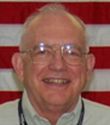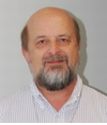 Warren Mitchell has more than 32 years experience in support of the space shuttle program. He helped put together the first mission support plan for the first flight of Columbia in 1981. Mr. Mitchell has supported all space shuttle missions either as the prime FDF mission coordinator or as backup. He was instrumental in the training of new personnel in support of the programs return to flight after the Columbia accident.
Warren Mitchell has more than 32 years experience in support of the space shuttle program. He helped put together the first mission support plan for the first flight of Columbia in 1981. Mr. Mitchell has supported all space shuttle missions either as the prime FDF mission coordinator or as backup. He was instrumental in the training of new personnel in support of the programs return to flight after the Columbia accident.
 Syed Hasan joined FDF in 2004, and has supported the STS and launch support activities since then. He received the SFA award in 2008 for his support of STS-124, when he averted a loss of communications with the shuttle during a critical phase of the landing. He is a graduate of the University of Maryland and received his MS in Aerospace Engineering from UMD in May, 2010. Mr. Hasan is employed by HTSI.
Syed Hasan joined FDF in 2004, and has supported the STS and launch support activities since then. He received the SFA award in 2008 for his support of STS-124, when he averted a loss of communications with the shuttle during a critical phase of the landing. He is a graduate of the University of Maryland and received his MS in Aerospace Engineering from UMD in May, 2010. Mr. Hasan is employed by HTSI.




